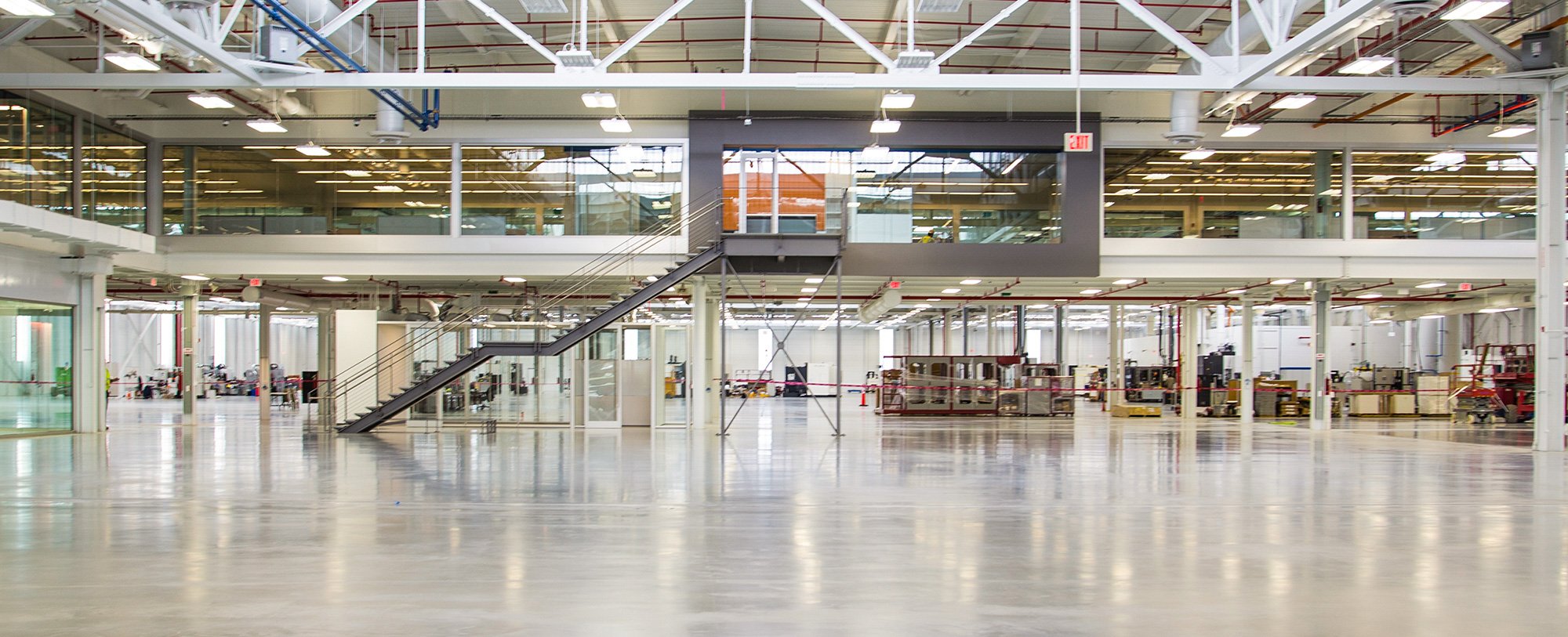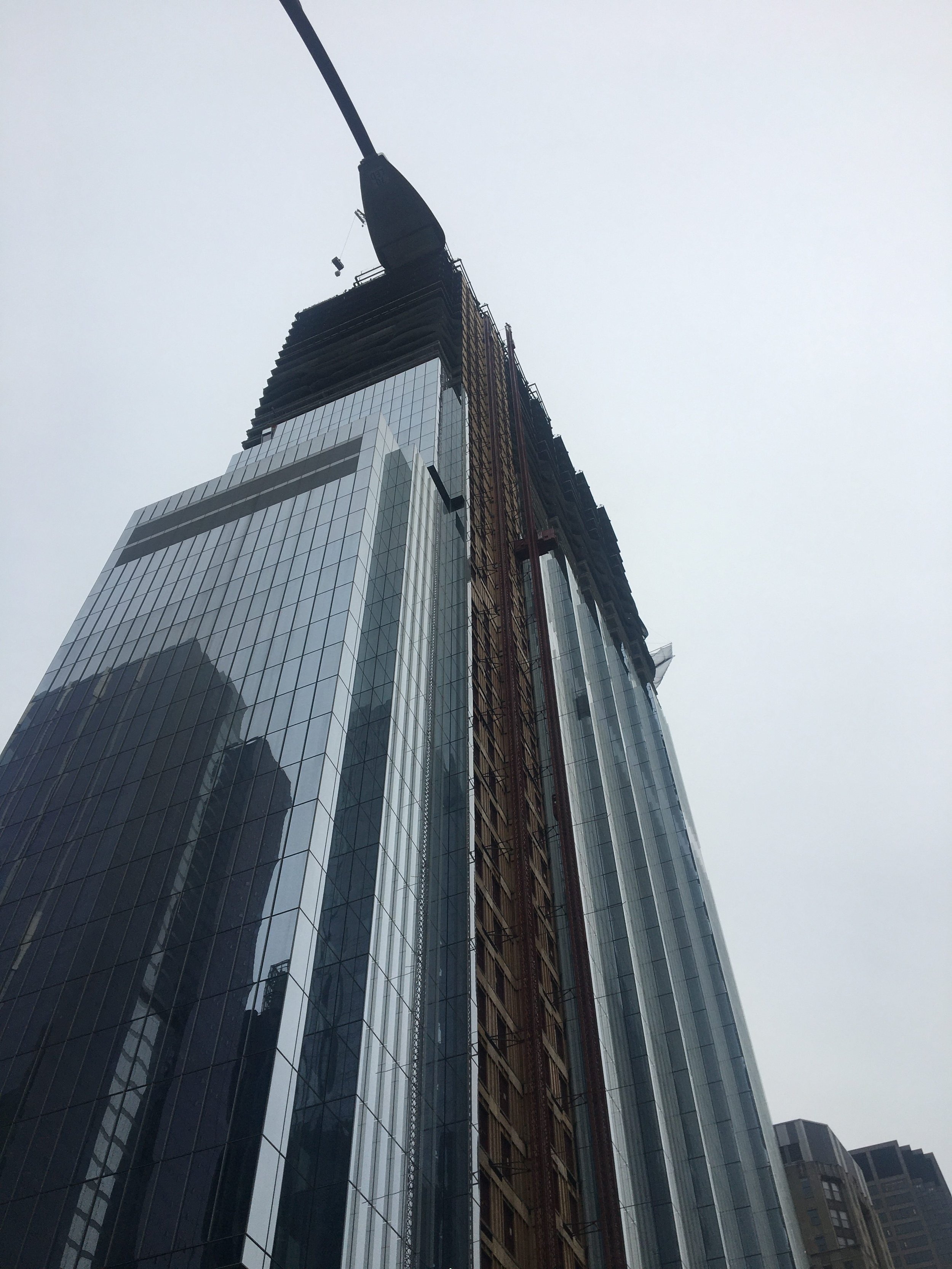
ProSlab™ Multi-Story Composite Deck
IBC Adopts SDI C-2011
The International Building Code 2015 (IBC-2015) has adopted SDI C-2011 allowing the use of steel fibers in place of welded wire fabric to control temperature and shrinkage cracking in composite metal deck applications.
The Steel Deck Institute (SDI) has had standards in place to accommodate steel fibers in composite steel floor deck/slabs for years. Due to the many advantages that steel fibers offer over traditional wire mesh, many designers prefer specifying them over WWF. The advantages include:
Faster installation and reduced labor costs – a typical fiber reinforced deck can be placed and finished in the time it takes just to place the mesh
Lower project cost from both a material and labor standpoint
A safer job-site – no mesh to trip over
Superior crack control
Smaller deflections and strains vs a mesh reinforced floor
The fact that IBC 2015 now recognizes and approves the utilization of steel fibers as a commonly accepted standard for steel decks, designers can now specify steel fiber without hesitation or the previously required Engineer’s approval. Project costs will also be minimized since steel fibers are the most cost-effective and efficient approach designers can take.
About
Save time and money by using ProSlab Multi-Story Composite Deck with CFS 100-2 or 150-5 steel fibers in your next composite steel deck project. Nothing provides better shrinkage crack control than steel fibers. Because the fibers are evenly mixed throughout the concrete, they eliminate the time and expense of placing mesh as well as the possibility of flaws due to improper positioning of the mesh.
Steel fibers have been used in composite steel decks for over 15 years. The Standard for Composite Steel Floor Deck Slabs (ANSI/SDI C-2011) governs the materials, design, and erection of composite slabs utilizing cold formed steel deck functioning as a permanent form and as reinforcement for positive moment in floor applications in buildings. Steel fibers are used for temperature/shrinkage reinforcement in these buildings. In these applications, any concrete floor cast on a metal frame and deck system is severely restrained from movement. When the concrete shrinks, the steel frame does not. This restraint causes tensile stress to develop in the concrete, which leads to shrinkage cracks. CFS 150-5 or 100-2 fibers are the best way to control shrinkage cracks in composite steel decks.
Case Studies
Poplar Street Bridge
St. Louis, MO
Wacker High Rise
Chicago, IL
Literature
Applications
The use of steel fibers in multi-story applications was made possible by International Building Code 2015 (IBC-2015), adopting SDIC-2011, allowing for the use of steel fibers in place of welded wire fabric to control temperature and shrinkage cracking in composite metal deck applications. Fiber-reinforced concrete can be poured and finished in the time it takes to set wire mesh on deck, and while cranes are required to hoist rebar to each floor, concrete fibers are simply pumped with the concrete, eliminating a major expense.
Additionally, wire mesh is a major job site tripping hazard and extremely difficult to install and keep in place in a way that effectively reinforces the concrete. Steel fiber is preferred over wire mesh for its ability to better control cracking and therefore improve performance and finish. Unlike welded wire mesh, which is located in a single plane and therefore allows cracks to grow until they meet this plane, steel fibers are distributed uniformly throughout the concrete matrix to meet micro-cracks where they originate.
-

Faster, Easier Installation
With no mesh to position, you can shave days and dollars out of your production schedule. This floor is ready to pour.
-

Improved Job Site Safety
One of the leading tripping hazards on deck is the mesh. This hazard is completely eliminated with the use of steel fibers, reducing potential injuries and insurance claims for the concrete contractor and all the trades working on the project.
-

Superior Crack Control
Compared to macro synthetic fibers, CFS 150-5 fibers provide superior crack control.

